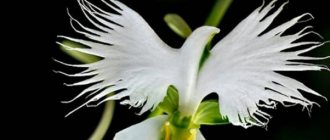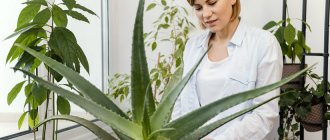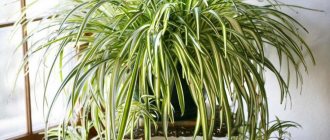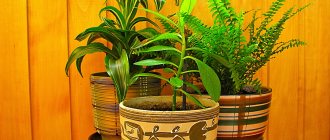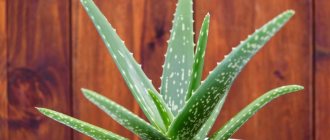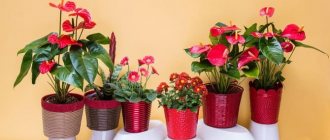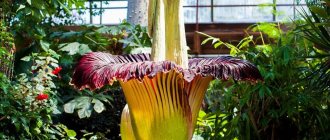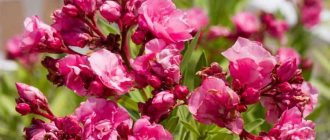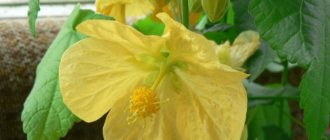In folk tales, signs and beliefs, white flowers are associated with purity, innocence, happiness and joy. It is not for nothing that the bride’s bouquet is made up mainly of white flowers. Landscape designers use white flowering plants to visually expand the space and create a benign, festive atmosphere that promotes relaxation and rest.
In natural conditions, there are many plants with white flowers, but not all of them are suitable for growing indoors. Thanks to the efforts of modern geneticists and breeders, today everyone can choose indoor plants that bloom white, but differ in size, shape of leaves, corolla, flower petals and their number.
White Bauhinia
This flower is popularly called the orchid tree because it is very similar to the popular orchids. Under natural conditions, Bauhinia can be found in tropical forest zones, but it also tolerates indoor conditions. The shape of the snow-white flowers resembles the fluttering of butterflies. You can admire the flowers during the day, but at night they close.
Basic care elements:
- A tropical guest should be placed in a warm room with plenty of lighting and without sudden changes in temperature.
- In winter, the plant needs rest with the temperature dropping to 12 degrees.
- The flower should be brought out of dormancy gradually to avoid burns to the young leaves.
- An important maintenance condition is irrigation - it should be plentiful in the summer season and supportive during the dormant period in winter. It is important to observe the interval between watering and allow the soil to dry out.
Bauhinia is not one of the capricious beauties, so it is enough to follow the basic rules and during the flowering period the plant will delight you with a snow-white blanket of fluttering flowers.
Arthropodium white
Arthropodium is a guest from New Zealand. It has purple and bronze elongated grassy leaves. During flowering, the falling shoots are densely covered with elongated flowers and the plant resembles a blooming Christmas tree.
Basics of care:
- Arthropodium white prefers warm sunny places, protected from drafts. The light should be bright enough, but diffused. Direct sunlight has a detrimental effect on the well-being of the plant.
- The flower should be watered moderately; even slight waterlogging of the soil should not be allowed. But Arthropodium will respond with gratitude to a refreshing shower. In winter, the plant should be watered extremely carefully and sparingly.
- During the period of active growing and flowering, the plant needs to be fed regularly. The interval between the application of complex mineral fertilizers is 14 days.
In order for Arthropodium white to please with flowering for a long time, you need to follow the watering and fertilizing regime.
Selenicereus
This plant belongs to the genus of cacti that came from the forest and rocky areas of South America. The body of Selenicereus is represented by thin multi-ribed flowing shoots, on which aerial roots-trailers are formed, with the help of which the plant is strengthened on any supports.
In mid-spring, flower buds begin to form on the shoots. They are small fluffy balls that gradually grow and turn into huge buds. Flowers up to 35 cm in diameter open in the evening, filling the space with a thick vanilla aroma. The flowers consist of multiple white petals with gilded sepals.
Flowering lasts only one night.
How to properly care for the plant:
- Selenicereus prefers brightly lit places and easily tolerates the influence of direct sunlight, but reacts painfully to the slightest drafts and sudden temperature changes.
- Watering should be carried out as needed - after the soil has completely dried. The plant does not need spraying, but periodically you should give it a light warm shower to wash off the dust.
- Selenicereus should be planted in a fertile, but light and loose soil mixture. Soil is good for cacti.
Jasmine Sambac
This unusual plant with a sweet, intense scent blooms all year round, taking a break for 2-3 months. Its flowers are used in perfumery and to flavor tea.
Popular varieties:
- Arabian Knights - unpretentious, with a strong sweet aroma and double flowers;
- Grand Duke of Tuscany – capricious, with a rich floral scent and white, dense flowers;
- Maid of Orleans - the flower lives for a day, then falls off, giving way to others;
- Belle of India is unpretentious, blooms all year round with white double flowers.
Jasmine Sambac is light-loving, prefers light, neutral, well-drained soil, and is afraid of drafts and direct sunlight. On the north side and under artificial light it will wither away.
The plant is susceptible to attack by aphids, scale insects and spider mites.
Phalaenopsis white
This simplest and most unpretentious representative of the orchid family is the most popular. White phalaenopsis is able to bloom almost the whole year, because the flower buds bloom gradually, and each snow-white butterfly flower lives from two to three months. The flower can form up to four peduncles, each with 6-12 buds.
Phalaenopsis has a short stem and long, oval, densely textured leaves that grow from a single point. The orchid does not strive to increase green mass and, when releasing a new leaf, it sheds one of the old ones. Therefore, more than six leaves can rarely be observed on a plant. The peculiarity of the orchid is that it produces fleshy aerial roots of a greenish flower, which can even form in the axils of the leaves.
The average lifespan of Phalaenopsis is about seven years, during which time the flower requires quality care:
- You can place the orchid in the back of the room, with enough diffused light. The optimal length of daylight is 14 hours. Therefore, you should take care of artificial lighting in advance. The suitable temperature for keeping the flower is 23-25 degrees.
- Phalaenopsis must be watered correctly so that drops of water do not fall on the leaves, especially in the center of the rosette. Excessive moisture causes the plant to rot. Irrigation procedures are carried out using water mist or the immersion method, when the flower collects the required amount of moisture through the drainage hole. If water does get into the outlet, it must be dried with a paper napkin.
- The butterfly orchid needs regular feeding throughout the season. Special fertilizers are applied 30 minutes after watering. When choosing a fertilizer, you should pay attention to its composition; if the fertilizer contains components that stimulate the formation of buds, then only healthy and developed specimens can be fed with it.
- The soil for orchids must contain the bark of coniferous trees. The plant is replanted every two to three years or when the roots completely entwine the earthen ball and begin to rise above the pot. The procedure is carried out after flowering has ended.
Caring for such a “snow white” is quite troublesome, because she is capricious. But, if Phalaenopsis likes the conditions, it will reward you with lush and long-lasting flowering.
Eucharis grandiflora
This tropical beauty is not demanding in care, easily adapts to the microclimate of the room and even with a minimum of care begins to form flower arrows. Blooms 2-3 times a year for 3 weeks.
Eucharis prefers intense, but not bright light and infrequent watering. Loves light, nutritious soil. Will be grateful for regular spraying and wiping of leaves. If there are sharp temperature fluctuations, it may die, and in a container that is too large, it may not bloom.
Zephyranthes
Zephyranthes is popularly called an upstart, because its flower stalks develop very quickly and often appear before the leaves. In its homeland, the flower begins to bloom after seasonal heavy rains brought by the western wind, so the name of the plant is literally translated as “flower of the western winds.”
Zephyranthes flowers appear singly and look like white lilies or crocuses.
Zephyranthes can rarely be found on windowsills, although this plant is absolutely unpretentious:
- It is better to place the flower in well-lit rooms on the southwest side of the house. And for the summer season, the upstart can be moved to the veranda.
- The optimal temperature in summer is 29-23 degrees, and in winter – 11-13 degrees.
- Irrigation procedures should be regular and plentiful. But you should not allow water to stagnate in the pot. After flowering, watering should be reduced and the plants should be allowed to drink only after the top layer of soil has dried.
- Fertilizing should be applied during the growing season and flowering in the form of a solution of complex mineral fertilizers at intervals of two weeks.
- The plant is replanted annually, because many baby bulbs are formed during the season and Zephyranthes becomes cramped in the pot. The procedure should be carried out at the beginning of the rest period.
Catalog of flowering indoor plants with photos and names
Azaleas or Rhododendrons Sims (lat. rhododendron simsii)
These are small shrubs strewn with bright large flowers.
The foliage is dark green in color, the leaves are pubescent on the underside, and have a dense leathery covering on the front. The small leaves very favorably set off the magnificent white, red, pink, and sometimes two-color buds. The flower petals can be double or simple, but they are all quite large in size. Azalea requires bright light, but tolerates partial shade. Abundant watering is needed during flowering at intervals of 2-3 days. In other periods, it is enough to water the flower up to twice a week. The optimal temperature does not exceed 15 degrees.
ADVICE!
It is better to place the azalea on a tray of gravel and keep it moist. Flowers must not be wetted!
Rhododendrons do well in heather soil and in a shallow, wide container. Non-lime fertilizer should be applied once a month. Azaleas live up to 7 years if they are well cared for and taken out onto the veranda during the dormant period. But the life of this riot of colors in the apartment is limited to a few weeks.
Anthurium (lat. anthurium)
Popularly called “male happiness” or “tongue of fire”. The plant is a perennial, blooming red all year round. The inflorescence can be pink, yellow, white, always in the form of a cob. Heart-shaped leaves of dark green color on long petioles reach 40 cm. The height of the plant ranges from 40 to 80 cm, growing half a meter in width.
A man's happiness lasts for 3 years, then the leaves fall. To make the flower comfortable, partial shade or diffused light is required in the complete absence of drafts. Watering is carried out once every 4 days, fertilizing is carried out every three weeks during the warm period of the year.
ADVICE!
Anthurium needs to be sprayed daily and at the same time manage not to get any drops on the inflorescence.
Primrose (lat. primula)
A perennial flowering plant with evergreen leaves up to 15 cm long. The foliage is corrugated and forms a rosette.
Bright primroses
The inflorescences are collected in umbrellas or solitary, the corollas are double or simple. There are varieties that combine a silvery coating on the petals and two-color petals or a bright core. There may be no smell.
In order for the flowering to be bright and long, it is better to choose the lightest place and water it in such a way that the soil is always moist. The leaves themselves cannot be watered.
It is better to place the pot on wet gravel. Primrose loves geranium soil and fertilizers.
IMPORTANT
After the plant has flowered, it is transferred to partial shade.
Geranium (Pelargonium)
This flower has a very pungent aroma that repels insects and pathogens. At the same time, prolonged stay near him can negatively affect a person’s general well-being and cause severe headaches . Therefore, you should not place geranium in a bedroom or children's room, even despite the fact that its flowers look very elegant and noble.
Geranium feels most comfortable in the sun from the western, as well as eastern and southeastern sides. The plant prefers good lighting, but it is advisable to avoid direct rays. The place where pelargonium is placed must be ventilated, the optimal temperature is 23-26 degrees; when heated to less than 10 degrees, this plant stops producing flower stalks. On hot summer days, geraniums require frequent watering; in winter, moisture should be minimized. In order for a flower to grow and develop well, it needs a medium-sized container. A mixture of leaf and turf soil, peat, humus and river sand is suitable as a substrate.
Begonia
Begonia is translated from Latin as “always blooming.” It received this name for its ability to bloom 12 months a year. This flower is distinguished by a rich color palette and decorative foliage. The plant requires full lighting, but the light must be diffused. Begonia grows best in damp conditions, but it is best to avoid spraying the leaves, as excess moisture causes unsightly brown spots to appear on their surface. You can maintain an optimal level of humidity by simply regularly adding liquid to the container tray. Watering should be carried out as the substrate dries; in summer, irrigation should be quite plentiful, and in winter - rare.
It is optimal to use chernozem with the addition of peat as soil for replanting begonias. This plant reproduces vegetatively - by stems, cuttings and division of rhizomes.
Balsam
This is one of the most unpretentious house plants. The culture is photophilous, but does not withstand direct ultraviolet rays. Balsam prefers warmth, but not heat. For full growth and flowering, it requires a temperature of 15-26 degrees, as well as daily spraying and abundant irrigation.
People call this culture “light”. And in fact, if you look at this plant during flowering, it will give the impression of a bright fire - this effect is created by the combination of inflorescences of deep pink and scarlet flowers. Flowering is long-lasting, usually lasting from June to November. However, when creating a comfortable microclimate, it can produce flower stalks at other times.
Clivia
The beautiful evergreen plant is named after Duchess Charlotte Clive, who was governess to the future Queen Victoria of Great Britain.
This flower arrived in Europe from South Africa, easily took root in northern latitudes and became a favorite of most gardeners.
An unpretentious plant will decorate any home or office space, but you must try not to move the pot and water it once a week.
Crassula
The round leaves of this plant look like coins, which is why Crassula is often called “money tree” or “crassula” among gardeners.
When it blooms, it is covered with small white flowers, sometimes red, and very, very rarely the flowers can be blue.
One of the most unpretentious room dwellers. Even a leaf that falls to the ground can sprout into a separate plant.
Lithops
Translated from ancient Greek, the name of the plant translates as “stone appearance,” perhaps because it comes from the rocky and sandy deserts of Namibia and Botswana.
That is why Lithops has learned to retain moisture and easily tolerate heat and arid climates.
The flowers of the desert dweller who migrated to apartments are white or yellow; very rarely there are varieties with orange petals.
Cyclamen
This is a flower loved by many gardeners for its small size and long and abundant flowering. The flowering period of cyclamen begins in late autumn - at this time, most indoor plants already go into hibernation. There are a lot of flower varieties, and everyone can find something they like. And given that cyclamen is not particularly demanding to care for, even a novice amateur gardener can grow a magnificent plant.
Krinum
Krinum or otherwise indoor lily, comes in two types - home and garden. This is a bulbous evergreen plant with beautiful white, pink or crimson flowers. The plant is quite large, can reach about a meter in height. The inflorescences bloom for quite a long time, usually more than a month. Crinum is a capricious plant; in order for it to grow and bloom well, it is necessary to study all the nuances of care.
Gardenia
Gardenia is a very beautiful plant, but it is extremely difficult to grow it indoors - the flower is quite capricious and requires constant attention. This ornamental tree, in addition to blooming very beautifully and having a unique aroma, is also successfully used in folk medicine due to its healing properties.
Hibiscus
Hibiscus or Chinese rose is a beautiful flowering indoor shrub. In apartment conditions it reaches large sizes and a height of up to 1.5 m. It has a straight trunk and branched side shoots covered with large dark green leaves. There are also variegated, very decorative forms.
The flowers of the plant, depending on the variety, can be simple or double. Their color is very diverse. Varieties with red, pink and white flowers are often found, but there are also varieties with yellow, cream, brown and burgundy blooms. Each flower blooms for only 2-3 days, after which it fades. But with proper care, flowers bloom almost daily from May to October.
Gloxinia
Gloxinia is a tuberous plant with a short stem, very large pubescent leaves and large bell-shaped flowers. This species gave rise to many varieties with simple and double flowers.
Gloxinia amazes with its beauty. Depending on the variety, they have a wide variety of colors. There are single-color and two-color varieties. Gloxinia is a plant with a pronounced dormant period. With the onset of cold weather, its ground part dies off. The tubers remain in pots, where they are stored at low temperatures all winter.
Orchids
Most indoor orchids are decorative flowering species. Their flowering is very unusual. Orchid flowers have a unique shape and are unlike any other flowering species. Outlandish flowers have exceptionally bright colors and serve as decoration for any room.
Most flowering indoor orchids are epiphytes, adapted to survive almost without soil. Their roots are located on the bark of trees or in a special substrate without the presence of soil. Orchids bloom for a very long time. Some species can bloom twice a year.
Mandevilla and geranium
A very interesting flower with pink flowers, which is grown indoors as a vine. By installing a suitable support, the mandeville can be shaped into any shape.
The appearance of the mandevilla is as follows:
- The stems are climbing, very long (up to 3 m).
- The leaves are elongated, shiny, slightly corrugated.
- The buds are simple, gramophone-shaped. Consist of 5 petals.
- The flower in the center is yellow.
Mandevilla
Mandevilla cannot be called demanding. She loves light, warmth and moderate watering.
The well-known geranium, which began to be grown on windowsills a long time ago, is also rich in varieties with pink-colored petals.
Geranium looks like this:
- Branched bush with low shoots. There are ampelous types.
- The leaves are round in shape with a pubescent edge.
- The flowers are simple and double shaped. Their size and color depend on the variety.
- A huge variety of varieties have been developed that have pink inflorescences.
- The culture does not require care. Feels great both in the room and on the balcony and loggia.
You can always create a certain atmosphere at home with the help of indoor plants. If most of them are endowed with pink buds, then romance and love will always be felt in the home.
Violet
Constantly blooming violets are a favorite of women. At floristic exhibitions, even people far from floriculture do not remain indifferent to the beauty of inflorescences. The petals surprise with their variety of shapes: simple, terry, corrugated, star-shaped, edged. The color range ranges from delicate lilac to thick violet. To admire the flowering for as long as possible, it should be borne in mind that violets love light, but can die in direct sunlight. It is enough to water it 2-3 times a month with warm, slightly acidified water, avoiding moisture on the foliage and rosette.
Pelargonium
Pelargonium is another year-round blooming flower. Its inflorescences can be different and delight household members with variety.
Care
- The flower can easily tolerate sunlight, so it can be placed on the sunny side of the apartment. The only royal subspecies does not tolerate bright light.
- The room needs to be well ventilated.
- For good development of pelargonium, the room temperature should not exceed 23 degrees, and if it falls below 10 degrees, the plant will stop blooming.
- In the summer, the flower needs to be watered quite often, the rest of the time it should be done less often.
- It is also worth monitoring the soil moisture, because the flower may be susceptible to fungal diseases.
- Pelargonium needs to be fed in parts. Fertilizer is introduced into the soil along with watering.
- The flower propagates using cuttings.
Hoya
This plant is also called wax ivy. An evergreen tropical crop in the form of a vine has large green leaves, the surface of which is covered with a thin layer of whitish wax. It is distinguished by flowers that are amazing in structure and shape. Star-shaped inflorescences can be white or red, glossy or pubescent. There is another white or yellow flower inside. These buds are collected in umbrella inflorescences.
In home breeding, two types of hoya are usually used - fleshy and beautiful. They tolerate sunlight well, including direct light, and high temperatures. Tropical exotic does not like too frequent watering and normally survives short-term drought.
Even low-maintenance indoor plants require attention. You may forget to water them, spray them, or organize additional lighting in winter. Perhaps they will not die, but their decorative value will decrease, there will be no flowering, and the leaves will fall off. Therefore, even such flowers require a certain air temperature, degree of soil moisture and lighting.
Spathiphyllum
An amazing indoor plant that does not have a stem. Its leaves grow directly from the soil. Spathiphyllum blooms profusely all year round with large snow-white flowers. The plant should not be exposed to drafts or direct sunlight. It should be watered moderately; you can spray it with water. Transplant into another pot only in spring.
Koleriya
A flowering plant that tolerates heat and coolness equally well. It requires moderate watering and sufficient air humidity. Once a month, the koleriya needs feeding.
With proper care, the plant blooms profusely throughout the year with velvety flowers. They are usually red or white in color and have contrasting speckles on the surface.
Pachistachis
An unpretentious house plant that can bloom all year round. Its yellow flowers look like candles. Pachistachis loves abundant watering and moist air. It also requires regular pruning. Comfortable air temperature for the plant is from +20 to +26 degrees. At low temperatures, Pachistachis sheds its leaves, and at elevated temperatures, it stretches out.
Baby Masguerade
This species is a small bush, the height of which in adulthood does not exceed 30-40 centimeters. But despite its minimal size, the crop develops powerful and bushy shoots. There are practically no thorns on the rose, and the foliage of a healthy plant will be colored a rich dark green. The green mass of the variety is contrasted with chameleon flowers, which bloom in inflorescences; their number can range from 5 to 12 pieces.
A distinctive feature of this type of indoor rose is the ability of the flowers to change their color several times. The plant will first produce lemon buds, which will turn pink over time, and in the final flowering phase, Baby Masguerade will have scarlet roses. Among the individual characteristics of the plant, it is also worth highlighting immunity to most fungal diseases and a very delicate aroma from the flowers.
Angela Rippon
This variety should be classified as a miniature indoor plant, but during flowering the crop produces a large number of flowers with a rich aroma. As a rule, up to 5 buds are formed in inflorescences. The height of the bush itself does not exceed 40 centimeters. The variety is distinguished by the absence of the need for pruning; in addition, the crop is very susceptible to various diseases, and therefore requires regular preventive measures.
Small-flowered roses should be grown in small pots, with frequent soil fertilization and the introduction of foliar fertilizing.
Aster Morning
During the flowering period, the rose produces double flowers of a creamy-white color, the width of which varies between 3-4 centimeters. The bushes of this variety are small, but quite dense, with dark green foliage. As a rule, the total number of inflorescences on a plant does not exceed 30, the rose has an unobtrusive aroma, and blooms almost constantly.
Medinilla
This bright flower grows only on the islands of the Malay Archipelago and in the tropics of Africa, and is occasionally found in Madagascar. There are about 400 species, represented only by shrubs. An evergreen plant in nature exceeds 2 m in height. The branches at the tops of the shoots are bare. The flowers are collected in panicles, hang down, and can be red, white or pink.
When grown in apartment conditions, Medinilla is very capricious; it grows better in greenhouses or conservatories. Prefers high air humidity, shedding buds and leaves at the slightest temperature fluctuation.
Euphorbia Mile
One of the most colorful varieties of milkweed. This indoor plant has beautiful flowers of two round pink petals. The branches have thorns, for which this plant was given another name - crown of thorns. In the natural environment it grows mainly in Madagascar, exceeding 2 m in height. It belongs to the succulents and perennials. The bush branches, the stems are gray, there are ribs. Oval leaves are collected at the tops of the shoots, with spines at the base.
Blooms for a long time, abundantly. The buds are located on long peduncles, but it is not they that are distinguished by their colorful colors, but the bracts, which can be red, yellow and orange. When grown in an apartment, Euphorbia Milya is undemanding, but requires regular shaping and pruning, since it grows upward indefinitely. There are no side shoots, the plant stretches into one trunk.
Vallota
Vallota is one of the most prominent representatives of the Amaryllis family. A distinctive feature of this bulbous plant is its long, erect and narrow leaves, which can change their color - the reddish color at the base smoothly transitions to rich green tips.
During the flowering period, the long flower stalks of the wallot can produce up to 3-4 buds in the shape of a lily or a bell, each of which can be up to 10 cm in diameter. The flowering of the wallot can occur twice a year, but usually lasts from August to September.
As for care, the wallot can hardly be called a demanding flower. She feels best on loggias and balconies on the south or east side of the apartment, but does not tolerate direct sunlight.
The optimal temperature for growing a flower is 22 degrees in the summer season, 16 in the winter. It is often not worth watering the wallot, the flower does not tolerate stagnation of moisture, and during the dormant period watering stops completely.
Regarding fertilizing, there are some nuances - organic matter should be alternated with mineral fertilizers and applied to the soil of the flower no more than once every 2 weeks during the period of active growth.
Hippeastrum
Hippeastrum is a perennial bulbous flower that can grow up to 0.7 m in height. It is a prominent representative of the Amaryllidaceae family and includes more than 90 varieties. In nature, hippeastrum can be found in the subtropical and tropical regions of America.
The plant is popular both for its double and voluminous flowers (each of which can grow up to 20 cm in diameter in favorable conditions) and for its long light green leaves with a characteristic glossy tint. The flower stalks of the plant are hollow and can include up to 7 buds. Indoor varieties have smaller flowers that may not smell at all. Flowering occurs twice a year.
Hippeastrum is not particularly picky and tolerates both direct sunlight and partial shade.
In the summer months it feels good at temperatures up to 25 degrees; in winter the temperature should not exceed +13. The flower does not respond well to waterlogged soil.
Fertilizers (exclusively mineral) are recommended to be applied only during the period of active growth; fertilizing is prohibited in winter. With the onset of cold weather, the flower withers, after which it must be placed in a dark place with a low level of humidity until February.
Indoor pomegranate
Pomegranate is rarely grown at home, but it can be perfect for the role of an ornamental plant. Under favorable growing conditions and conscientious care, it will delight not only with abundant flowering, but also with fruits.
Indoor varieties of pomegranate are dwarf hybrids (up to 1 meter in height), the most popular of which are “Ruby”, Baby and Nana. Externally, the indoor pomegranate is a miniature tree with a large number of thin branches, each of which is covered with thin thorns. The leaves are small, light green, with pointed tips. Terry and self-pollinating pomegranate flowers have a unique shape in the form of a water lily; there can be up to 20-30 of them on a tree. The flowering period lasts more than 3 months and begins in April.
Plants that bloom all year round
Household flowering plants decorate rooms, corridors and even entire areas with their presence.
Long-flowering indoor plants are:
- Indoor maple (abutilone). As a rule, it fades in the autumn. If you provide it with special color lamps and properly care for it, the flowering will not end.
- Anthurium. It has glossy leaves. It develops better on southern and western window sills.
- Balsam. Loves color very much, but is afraid of direct sunlight. It can be used when planting on landscape elements: from borders to rock gardens. It got its name from the presence of a very sensitive fruit capsule: at the slightest touch it opens. Balsam is distributed throughout the globe, except Antarctica.
Terry balsam
- Begonia. It is worth taking care of her constantly. Root begonias, which do not require rest like tuberous begonias, are considered the most picky. In the spring it is necessary to prune the bushes.
- Geranium. The main advantage is its versatility: it can be both a houseplant and a garden plant.
- Royal pelargonium. In order for the flowering to be abundant, it is necessary to prune it, leaving 3-4 internodes.
- Chinese rose (hibiscus). One flower lives for a day (in double species - up to 3 days). Refers to flowering indoor plants, the height of which can reach two meters.
- Koleria. Loves moist air, but does not tolerate spraying of leaves.
- Pachistachis. The optimal temperature for it is considered to be +23-26 degrees. When it rises, the shoots begin to become bare; when it falls, the foliage falls.
- Ruellia. Watering is necessary only when the soil dries out. Ruellia does not like drafts and dry air.
Climbing indoor vines
Some gardeners believe that climbing vines have no place in the house. These are prejudices. No flower can lead to quarrels and discord in the family.
Additional Information. Energy specialists carried out a number of works. It became obvious that climbing plants were taking negative energy out of the room. They can be called a “home vacuum cleaner”. Therefore, they should “give away” all their experiences, destructive emotions - they will “absorb” everything unnecessary and disturbing like a sponge.
Canopy plants are considered ornamental crops that have long and flexible stems. With their help, they curl upward or, conversely, spread along the surface. The best planting option for them would be hanging vases or baskets. You can also install special supports for them to make it easier for the shoots to develop.
Houseplants that bloom in winter
Flowering indoor plants that delight the eye with blooms in winter:
- Poinsettia (spurge spurge). It is also called the Christmas star. When in bloom it produces bright red, white or cream leaf-shaped flowers.
Note! Euphorbia is poisonous. It is not advisable to keep it in a house with children. When the stem is broken, it releases a poisonous milky juice.
- Hippeastrum. Does not require special attention. Loves warmth and diffused light.
Poinsettia
- Bromeliad flowers. They have bright green leaves and colorful flowers. The most famous indoor flowers with pink flowers are Guzmania and Tillansia.
Flowering bulbous perennials
This is a special type of flower that usually grows in landscape areas. With proper care, flowering will continue from early spring until late autumn.
Spring bulbous flowers
Types of bulbous perennials:
- Corms,
- With a small onion,
- Bulbous.
Bulbs have the ability to retain all the nutrients within themselves so that the flowers grow strong, bright and strong.
The following types are also distinguished for uninterrupted flowering:
- Primroses (spring). These are crocuses, scillas, snowdrops. A little later, daffodils, tulips, irises, and hyacinths begin to bloom.
- Summer, bulbous. They have a stunning color palette and strong aroma: lilies, dahlias, callas, gladioli.
- Autumn. This includes cyclamen and crocuses.
Calathea
This beauty can be a great addition to your bathroom with natural light. Warm, moist air will remind her of the tropics and ensure healthy growth.
Philodendron
Like Monstera, it is perfect for many modern styles. Large leaves of different shapes can be selected to match the contours of the interior. And decorate large pots in the same style as the decor.
Which to choose?
When purchasing a large indoor plant, you need to take into account several factors, and the first of them is the difficulty of care. It is important to assess how hardy the plant is to its living conditions, find out the requirements for soil, lighting, indoor humidity levels, the need for pruning and frequent watering. Consider your willingness to invest a lot of time and effort into caring for such a pet.
Find out in advance how quickly the plant you like grows, because many are not ready to wait several years or even decades before it reaches impressive dimensions. If you need results in the coming months, then it makes sense to purchase fast-growing varieties or an already mature plant.
If you plan to grow two or more crops, then consider their compatibility.
Think about what they would look like together and see if they have a negative effect on each other. And, of course, pay attention to the appearance of the plant.
Some people prefer fuchsia, some like palm trees, while others like classic hibiscus or unusual cypress trees. Personal preference should be the deciding factor when choosing a green pet.
Gardenia
In nature, gardenia is a tall (up to 2 meters) evergreen shrub. Domestic varieties do not grow higher than 60 cm.
It has strong stems and large glossy leaves, painted in dark green tones . Some varieties have bare stems, others are decorated with a delicate edge.
The range of corollas is small; they can be white or yellowish. They emit a pleasant aroma.
Important! To give your gardenia an elegant decorative appearance, do not neglect regular pruning of the plant.
Flowering stimulation and care
Many gardeners, especially beginners, are faced with the problem of their pets not blooming. The main mistake is an incorrectly organized rest period .
The plant requires a lot of strength to please you with beautiful flowers. During the dormant period, you need to provide it with a decrease in temperature and frequency of watering.
Bulbous species are sent for storage in winter by digging up the bulbs or placing the pot with the pet in a cold place.
Recommendations for cultivation
When caring for a flowering indoor plant, pay special attention to its lighting and watering . Some species need long daylight hours, while others require shade to bloom profusely.
Fertilizer for flowering indoor plants should contain potassium and phosphorus, but it should contain a minimum of nitrogen.
When purchasing mineral complexes, pay attention to the NPK marking, which indicates the percentage composition of each element.
Sources
- https://agronom.guru/komnatnye-cvety-s-foto-i-ih-nazvaniyami
- https://stroy-podskazka.ru/komnatnye-cvety/cvetushchie-kruglyj-god/
- https://most-beauty.ru/nature/samye-krasivye-komnatnye-tsvety.html
- https://ProZvety.ru/katalog-rastenij/krasivotsvetushhie/komnatnye-tsvety-kotorye-ochen-krasivo-tsvetut
- https://florist-club.com/design/krasivotsvetushhie-rasteniya.html
- https://sad24.ru/cvety/komnatnye/rasteniya-s-rozovogo-tona-cvetkami.html
- https://WhatFlower.ru/houseplants/samye-neprixotlivye-komnatnye-cvety-s-foto-cvetushhix-rastenij-dlya-ofisa-i-kvartiry/
- https://zen.yandex.ru/media/moiorhidei/14-neprihotlivyh-domashnih-rastenii-kotorye-mogut-cvesti-kruglyi-god-5d9da6771ee34f41895508c9
- https://stroy-podskazka.ru/rozy/sorta/raznovidnosti-komnatnyh/
- https://doma-v-sadu.ru/komnatnye-rasteniya/s-rozovymi-tsvetkami-ili-listyami.html
- https://stroy-podskazka.ru/komnatnye-cvety/s-krasnymi-cvetami/
- https://pocvetam.ru/komnatnye-rasteniya/cvety-i-cvetushhie-rasteniya-s-nazvaniyami.html
- https://kvartblog.ru/blog/bolshie-komnatnye-rastenija/
- https://stroy-podskazka.ru/komnatnye-cvety/bolshie/
- https://RoomFlower.ru/poleznoe/cvetushchie-komnatnye-rasteniya.html
[collapse]
